Peppers have been used for thousands of years by civilizations for culinary and medicinal purposes. Scientific evidence of fossilized capsicums has shown that ancient Ecuadorian civilizations were cultivating peppers over 6,100 years ago! This predates Christopher Columbus where many stories would have us believe he spread the use of peppers and spices when visiting the new world. There are thousands of varieties of pepper plants; below are my favorite 15 types of pepper plants to grow.
Peppers have been cultivated over the years to create different peppers based on color, flavor and Scoville heat units. Selective breeding has occurred over the years to bring out the best quality in hybrid peppers to foster disease resistant capabilities which are a benefit to commercial growers. There are also many heirloom varieties of peppers that have become favorites of many home gardeners over the years.
What is a Scoville Heat Unit?
Invented by Wilbur Scoville, the Scoville scale measures the amount of “heat” in a pepper and ranges from 0 to 16 million. The heat of a pepper is caused by a compound known as capsaicin that activates the chemoreceptors in ones tongue, skin and membranes. The higher the concentration of capsaicin, the higher the Scoville value is for the pepper. Capsaicin is contained in the pepper seeds and membranes. The rating of 16 million is pure capsaicin.
Types of Hot Pepper Plants to Grow
If you’re looking for the best types of hot, spicy peppers to grow, here’s a list of my favorite varieties.
A perfect pepper for eating raw, roasting or stuffing, the Anaheim pepper is a mildly hot pepper ranging from 500 – 2,000 Scoville units. Find these as canned green chiles in your grocery store or fresh in the produce section. The peppers are a bright vibrant green and measure 5 – 8″ in length. These peppers have thick walls making it a sturdy pepper that will hold up in many culinary dishes. A hotter strain of these peppers known as Hatch Green Chiles are grown in Hatch, New Mexico.
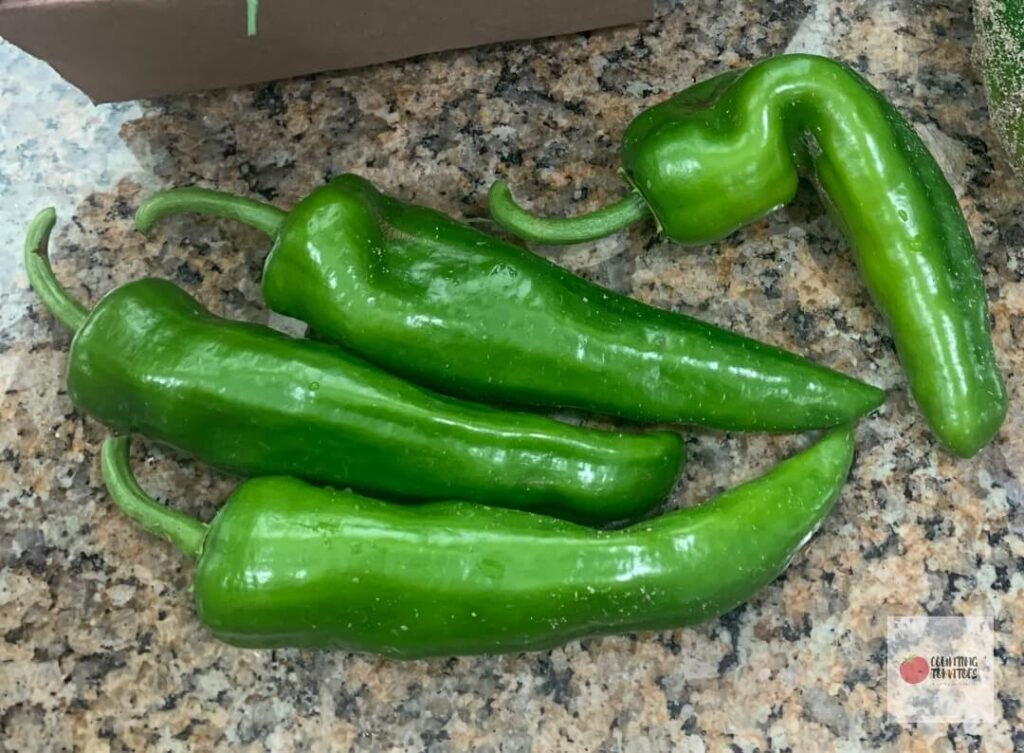
The cayenne pepper is a long skinny red peppers that is 5 – 6″ in length when ripe. Cayenne pepper found in your kitchen spice drawer is made from these dried peppers. Most often used for culinary and medicinal purposes, cayenne peppers range from 30,000 – 50,000 Scoville units.
The world’s hottest pepper, the Carolina Reaper, ranges from 1,400,000 – 2,200,000 Scoville units. The small peppers are only 2 – 3″ long and characterized by bumpy skin and a little hooked tail resembling a scorpion. The bite of these pepper makes it a serious scorcher. Most gardeners may not be ready to partake in such a spicy pepper, but they are a conversation piece.
A native to the southern border region, these peppers grow wild along the the US Mexico border. These peppers are actually the official Native Pepper of the State of Texas. The peppers are tiny like peppercorns and are used in both fresh and dried forms. Combine them with vinegar for a spicy sauce to sprinkle onto foods. Chiletepin peppers grow on wide bushes that are 3 – 4′ tall and up to 10 feet wide. These grow wild on our property and I love to toss a few of these into fresh salsa or when making pepper jelly. The heat units on these tiny peppers are 50,000 – 100,000 Scoville units.
The ghost pepper, native to India, is one of the hottest peppers in the world. Most ghost peppers are red, but there are yellow, chocolate, and even white ghost peppers. Ghost peppers register around one million Scoville units and have wrinkled skin. Most peppers that have an extremely high heat level often have wrinkled skin warning away curious eaters.
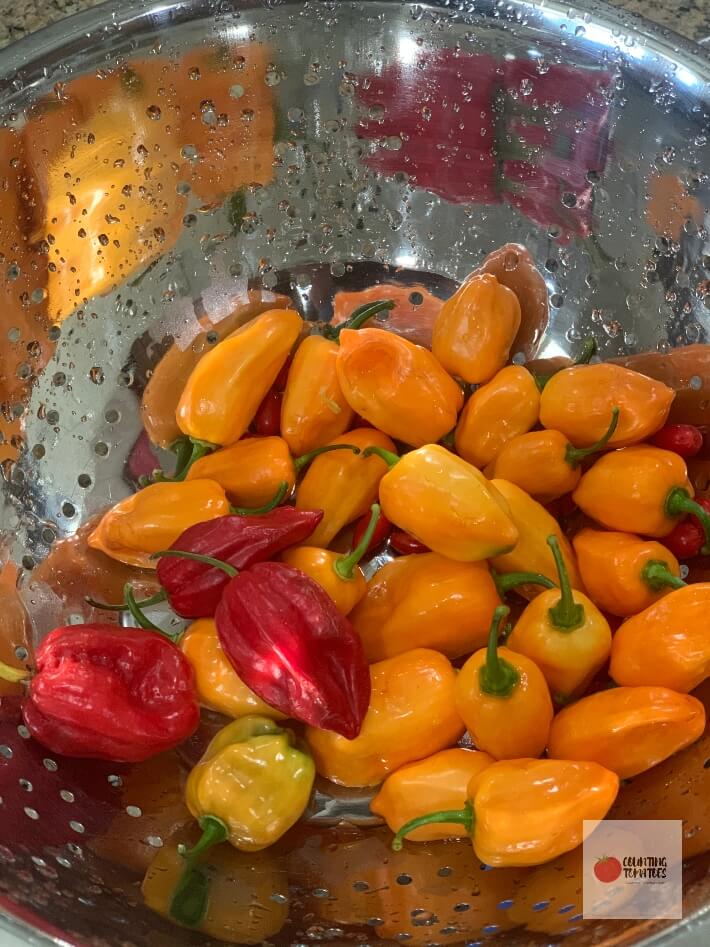
These warm season peppers come in a variety of colors and ripen from green to yellow, orange, red, or chocolate colored flesh depending on the variety. The habanero pepper measures 100,000 – 350,000 units on the Scoville scale. It’s not for the faint of heart, but it has an addicting kind of heat factor that has become a favorite of many pepper lovers.
Jalapeno peppers are some of the easiest and fastest growing peppers. Most people harvest these as green peppers, but they will ripen to a bright red color if left on the plant. The jalapeno pepper ranges from 3,500 – 8,000 units for heat. It is very easy to grow jalapeño peppers in containers.
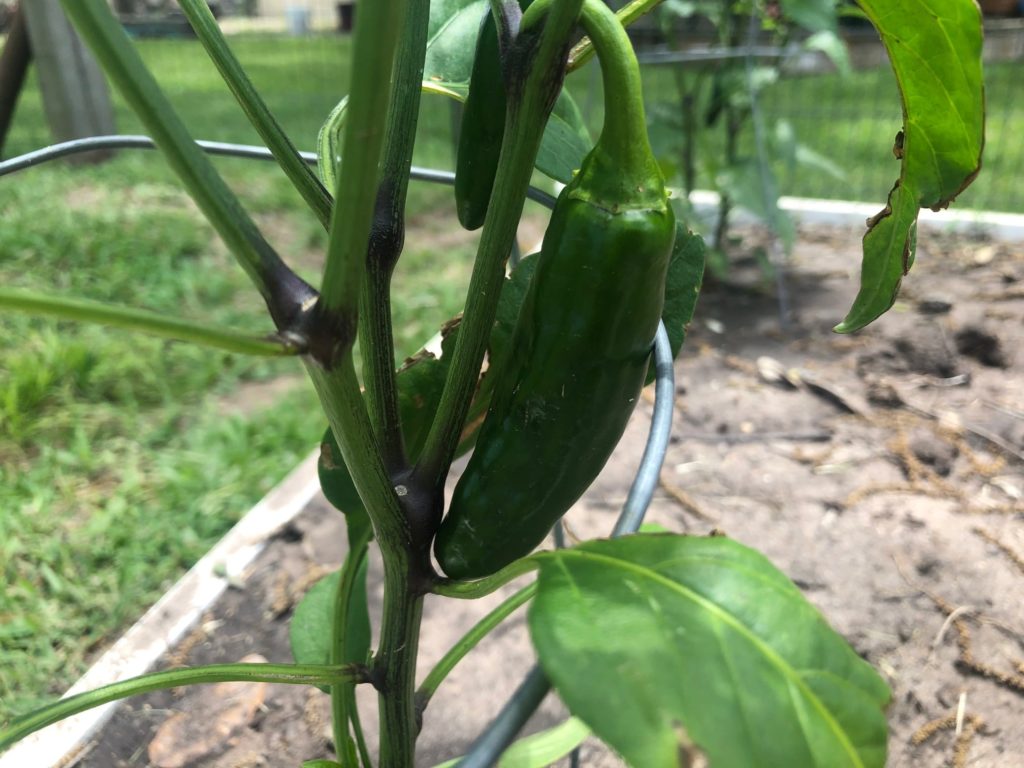
The poblano pepper is only mildly hot ranging from only 1,000 – 2,000 heat units. The peppers are fantastic for stuffing and cooking for chile rellenos. The ripe peppers are dark green and approximately 4 – 6″ long.
Serrano peppers are wonderful in salsas and approximately 10 times hotter than the jalapeno pepper. The serrano pepper ranges from 10,000 – 23,000 heat units on the Scoville scale. These are long slender green peppers measuring 3 – 4″ in length and often found in grocery stores near the fresh jalapeno peppers. If you want to make a hot salsa, combine a few serranoes in your recipe with the jalapenos to really spice things up! As shown below, you can leave serrano peppers on the plant longer to ripen to a beautiful shade of red.
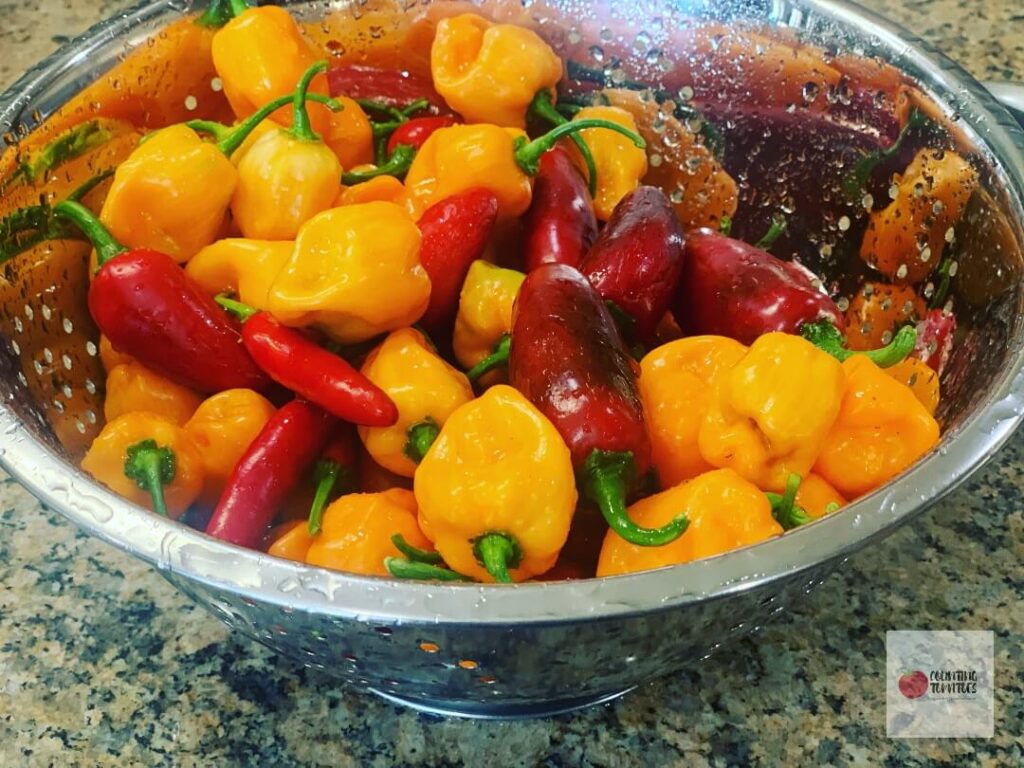
This small pepper has really become popular in restaurants and home cooking in the last couple of years. Most often these are mild peppers, but occasionally a hot shishito pepper will appear in the mix. Best sautéed in a pan with oil, salt and pepper, these peppers are slightly blistered and served as an appetizer or as an accompaniment to a main dish.
Thai peppers are perfect for stir-fry dishes and any Asian cooking. The Thai’s enjoy spices and consume more peppers than any other culture. The peppers grow upwards on the bush and will mature from green to red. The mature peppers are 1.5″ – 3″ long and measure 50,000 – 100,000 heat units.
Types of Sweet Peppers to Grow
Banana peppers are a mild tangy chili pepper that are most often served as a bright light green pickled or fresh pepper. They can ripen to a red or orange flesh. Rarely, will you encounter a spicy banana pepper. They only measure up to 500 on the Scoville scale, so these are classified as a type of sweet pepper.
Bell Peppers
One of the most popular peppers is the bell pepper. Grown in a variety of colors from green, yellow, orange, red and purple these peppers will brighten any dish. These peppers are completely sweet and do not have any heat at all. I prefer to grow the California Wonder, an heirloom, or the King Arthur Bell Pepper.
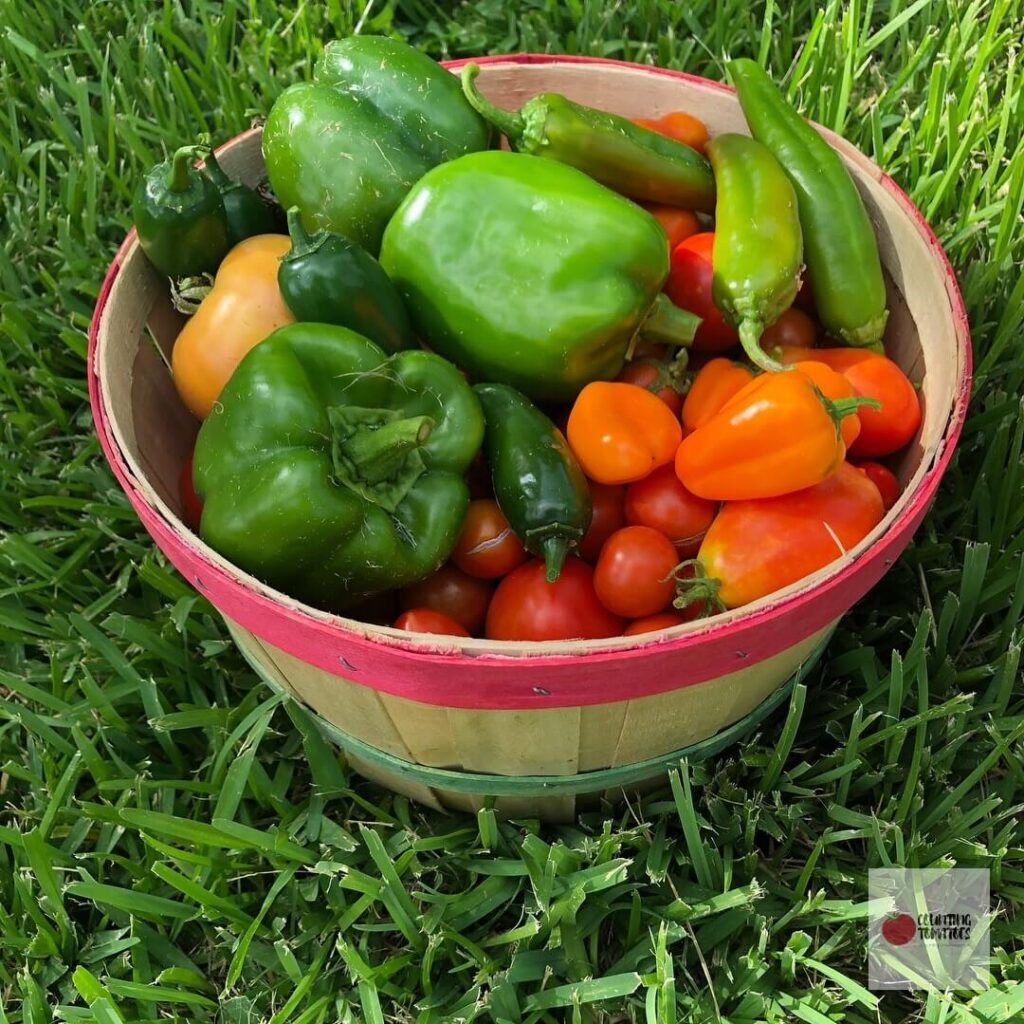
Colorful 4″ long peppers, the gypsy pepper is easy to grow and resistant to the tobacco mosaic virus. These peppers are a light green and their flesh ripens to beautiful shades of red and orange. The peppers are wonderful eaten raw in salads or diced and added to cooked dishes. A wonderful pepper with a sweet taste that is loved by all. This one is a must grow!
The sweet flavor of the pimento pepper makes it the perfect pepper for stuffing, eating raw, or adding to any favorite dish. They start growing as a green pepper and then ripen to a beautiful red. Pimento peppers mature to approximately 4.5″ in length and 3″ wide.
When Should I Plant Pepper Seeds?
I recommend starting your own peppers from seeds because of the wide variety you can source from seed companies. Often the big box stores only have a few varieties and there are so many more interesting peppers you can grow.
Start your pepper seeds 8 – 10 weeks prior to your last frost date. Pepper seeds will germinate well in seed starting mix that is consistently moist and maintains a temperature between 70° F – 90° F. Starting your seeds on a heat mat will greatly help pepper seed germination.
Transplant pepper seedlings outdoors into the garden after hardening off and after night temperatures are above 55° F.
Stake pepper plants using tomato cages, the Florida weave method or tie them to a trellis for support. Pepper plants are fragile and susceptible to wind and heavy rain damage.
Conclusion
So whether or not you’re growing the world’s hottest peppers, the Caroline Reapers, or a tame sweet pepper like the King Arthur Bell Pepper, you’re sure to find one that suites your taste buds. My homegrown peppers have gone into many of my favorite dishes over the years and I cannot wait to continue to find more uses for peppers this growing season.
Try some of my favorite recipes for peppers:
Easy Creamy Hatch Green Chile and Corn Dip
One Pan Keto Stuffed Bell Peppers
Linking up with the Homestead Blog Hop


